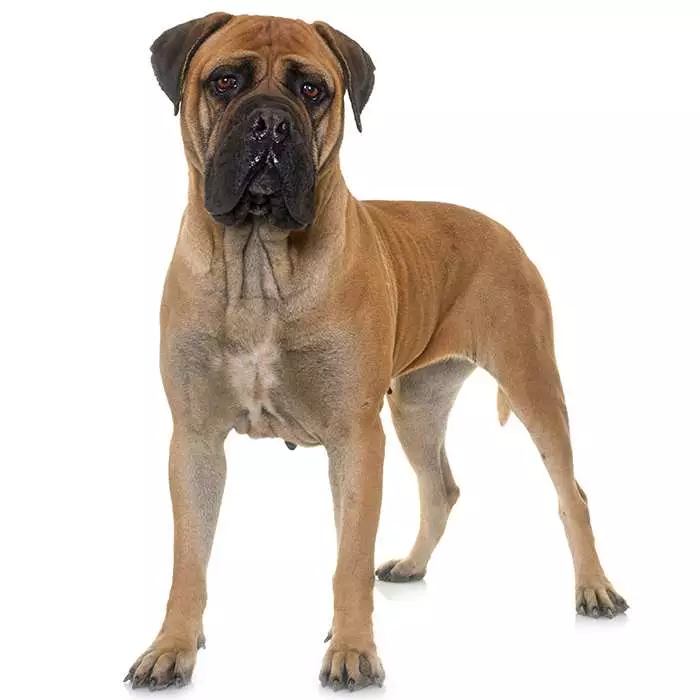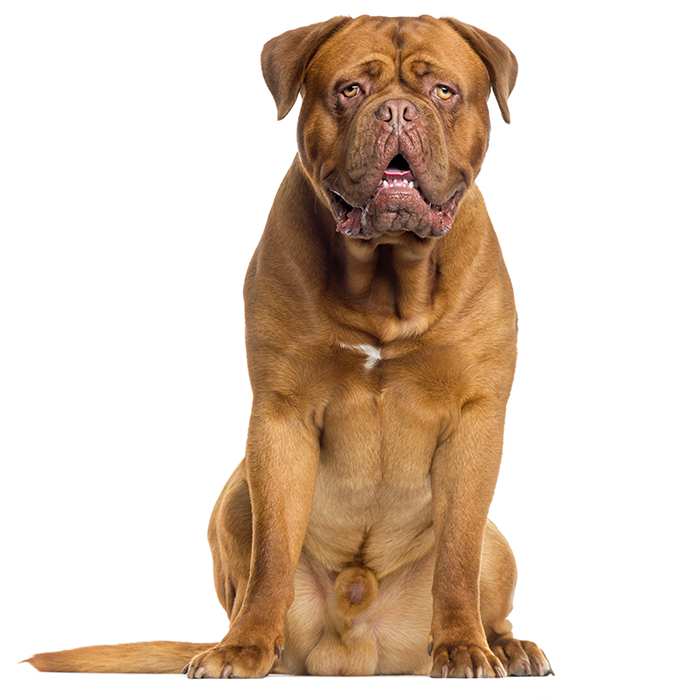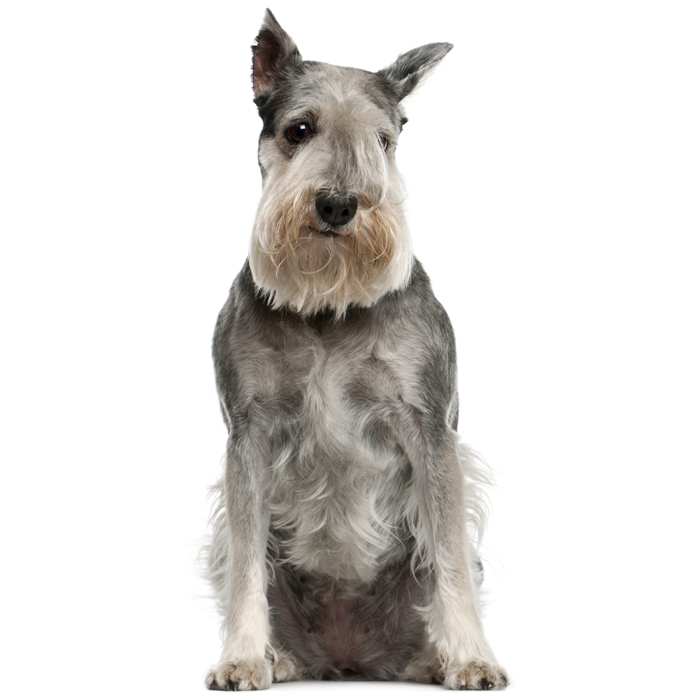Bull Terrier
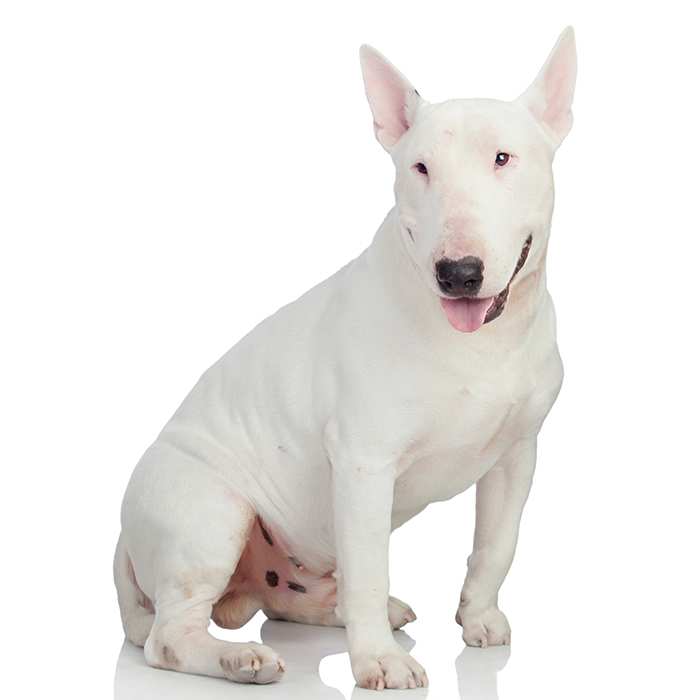

| Recommended for | Families with older children (requires an experienced handler) |
| Breed Classification | Terrier group |
| Other names | BT |
| Lifespan | 10-14 years |
| Size | Large |
| Temperament | Stubborn, loyal, independent, mischievous |
| Intelligence | Average |
| Tendency to bark | Medium |
| Maintenance Level | Medium |
| Health Risk | High probability of health issues during its lifetime, hence it is one of the more expensive breeds to insure. |
Insuring a Bull Terrier?
Get award-winning cover with more benefits and up to 80% of eligible vet bills reimbursed. Find out about your cover options.
Get a quick quote
Is this breed right for you?
Try our breed selector quiz to find out your best matching breed!
Insuring a Bull Terrier?
Get award-winning cover with more benefits and up to 80% of eligible vet bills reimbursed. Find out about your cover options.
Get a quick quote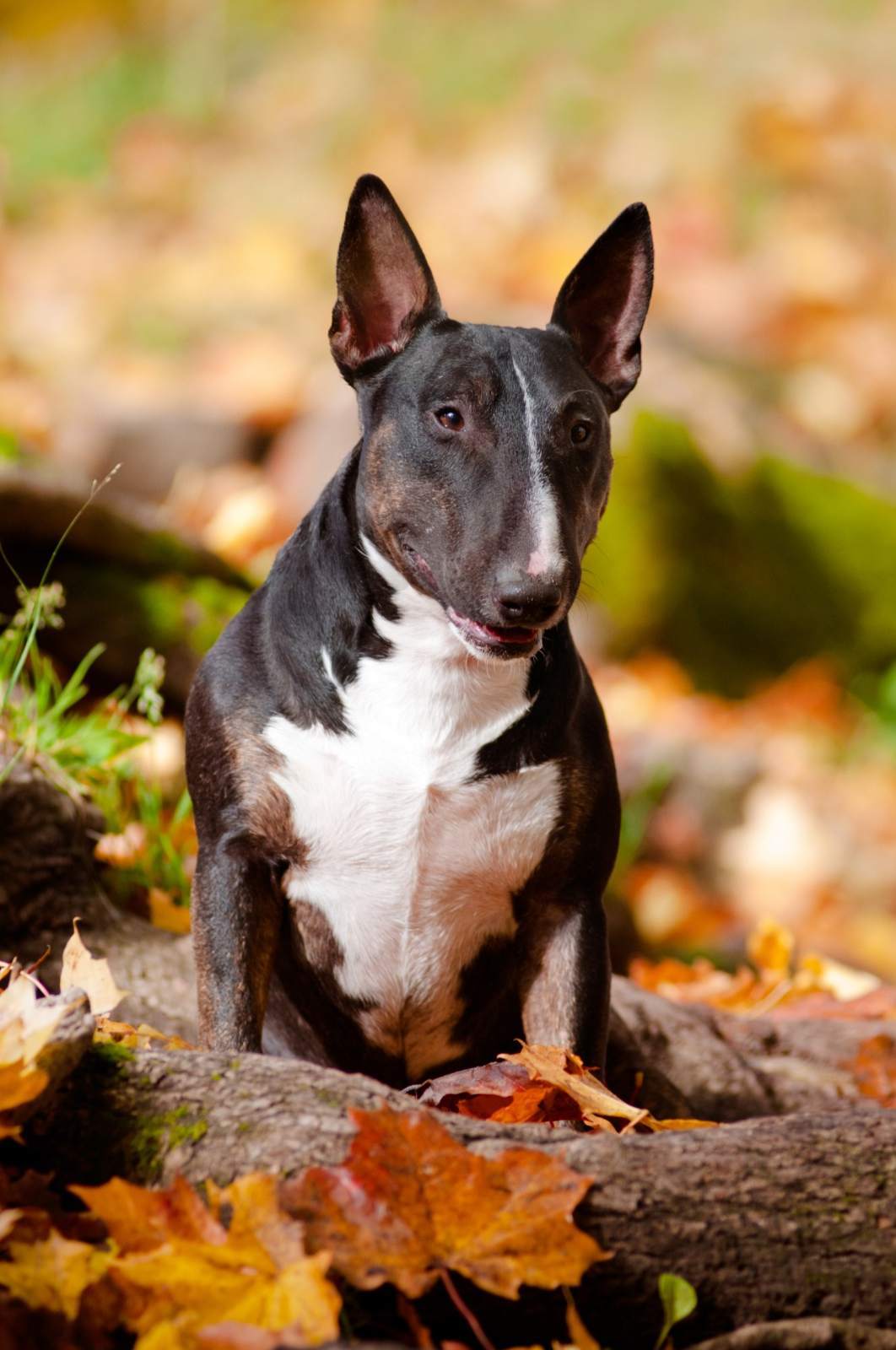
Breed history of Bull Terriers
A Bulldog-terrier cross called the Bull-and-Terrier was developed originally to hunt and kill vermin but was also engaged in dog fighting, where dogs mauled each other in indoor pits. The breed was a mix of the stout and muscular Old English Bulldog (now extinct) and the speedy and agile Manchester Terrier. The result was a fighter with the power of a Bulldog and the animation and fiery spirit of the terrier.
When pit fighting was banned in England in the mid 1800’s, the Bull Terrier became a fashionable companion for well-heeled young gentlemen of the time. Breeders further developed the breed to refine its looks and sweeten its nature, to make it more suited to its new role.
The modern Bull Terrier was first introduced at the Birmingham Show in May 1862. James Hinks was the owner and dealer and is widely considered to be the original breeder of the modern Bull Terrier. Hinks’s dogs were white, but by the early 20th century coloured Bull Terriers were seen. After its introduction in England, the breed quickly gained popularity and in 1887 the Bull Terrier Club was formed.
With the role of the Bull Terrier changing from hunter and fighter to companion dog, the breed was further developed to improve its temperament towards children.
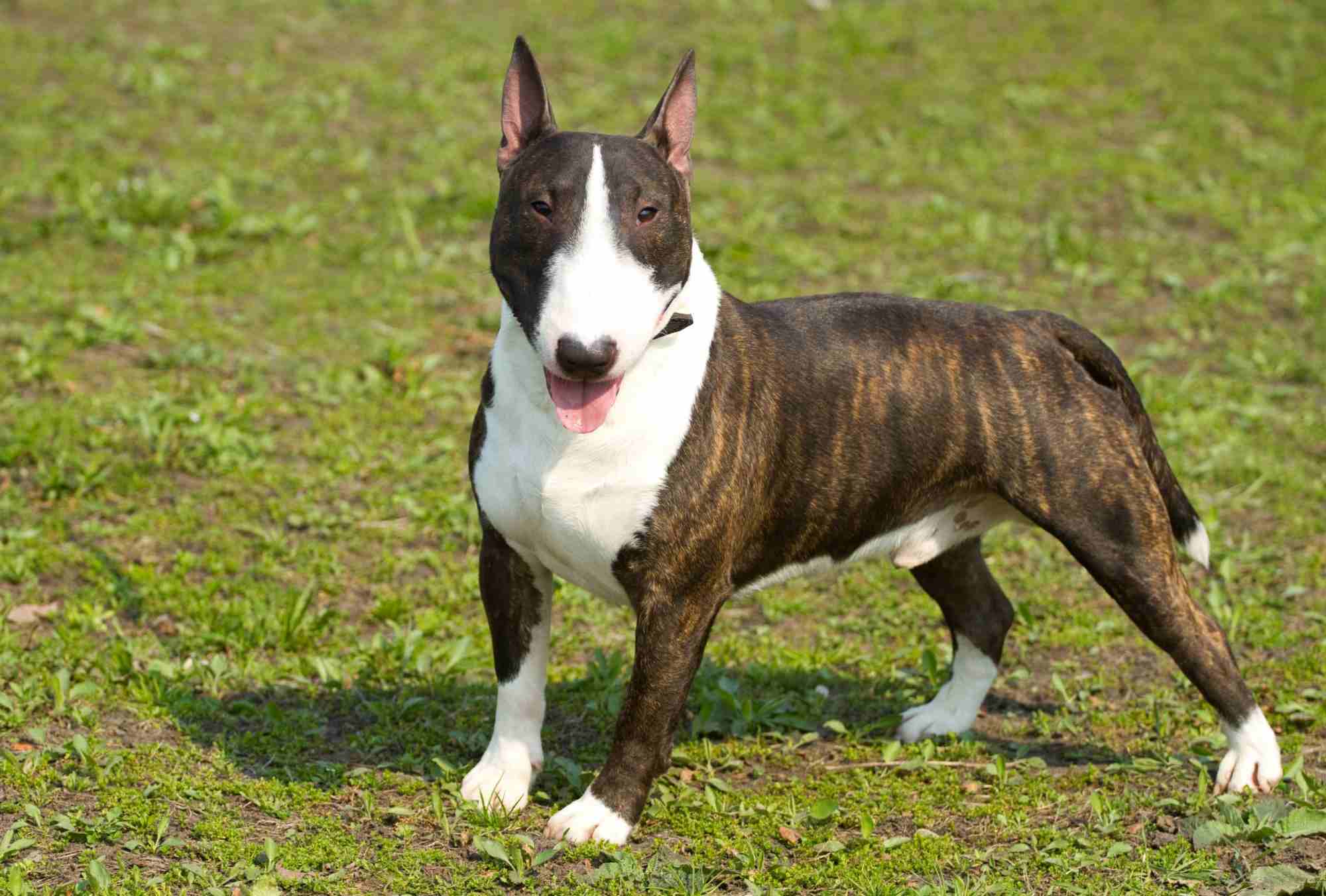
Physical description of Bull Terriers
The Bull Terrier has a stout and muscular dog that reflects its agility and power.
It has a a very distinctive face, a unique, elongated head, erect, pointed ears and small, triangular-shaped eyes.
The Bull Terrier’s short, glossy coat comes in two types: either plain white, or any other colour, including the brindle striping pictured here, either solid or with white markings.
| Weight range | 22 to 33 kg |
| Height range | 51 to 61 cm |
| Colours | white or any other colour, either solid or with white markings |
| Coat length | Short |

Bull Terrier personality and temperament
A popular companion for adults and families alike, the modern Bull Terrier is very loyal to its family, playful and good-natured. They will warm up to strangers after a brief friendly encounter or two.
The Bull Terrier is a stubborn, inquisitive, bold, independent and adventurous dog. The breed doesn’t need a lot of attention to remain happy, but they do require regular human contact and enjoy being inside the house. They, tend to suffer from separation anxiety if left alone for an extended period of time and may develop behavioural problems as a result.
Bull Terriers are very focused on their owners, thriving on body contact and interaction. Boisterous and energetic, they love a good play and can easily get overexcited; keeping a lid on their emotions isn’t a Bull Terrier’s strength. They might knock you over from sheer excitement or bark loudly and hysterically, but they don’t mean any harm – it’s just their way of showing their love for you.
There are four key aspects to the Bull Terrier’s happiness: early socialisation with dogs and people, firm but loving training, sufficient exercise, and lots of quality time with its favourite humans. If these needs are met, there is no more loyal, lovable, and entertaining companion.
Although the Bull Terrier’s original role was a fighter, today the dog has been developed over time to be a companion animal. Unfortunately, the breed is sometimes reputed to be dangerous or aggressive, largely because a number of attacks and behavioural issues that have been reported in other terrier sub-breeds, such as Pit-Bull Terriers and American Staffordshire Terriers.
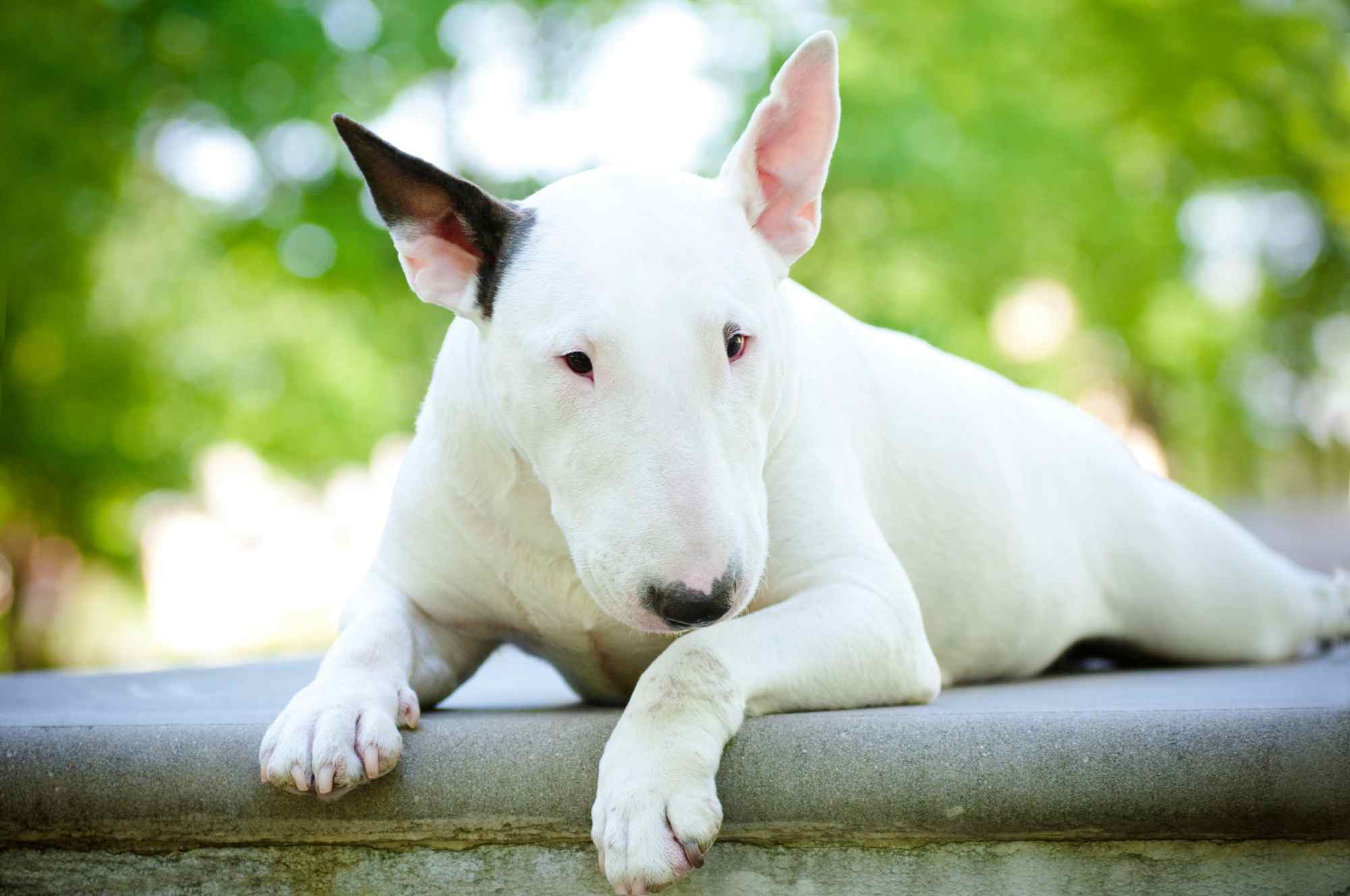
Bull Terriers with kids and other pets
The modern Bull Terrier is known to show great affection and fondness to children. However, if a BT hasn’t had much contact with children from a young age it may not be very tolerant towards them.
It’s best to have a Bull Terrier in a family with older kids, though; their independent nature, high level of energy and physical strength can be difficult for younger children to manage. Supervision of young children with Bull Terriers is essential.
Bull Terriers are not recommended with other dogs of the same sex, as they may sometimes show aggression towards other animals, especially male BT’s towards other males. They tend to get along better with other dogs of the opposite sex, so a male will often get on with a female but not with another male.
If raised together from puppyhood, they can coexist with cats and other animals.
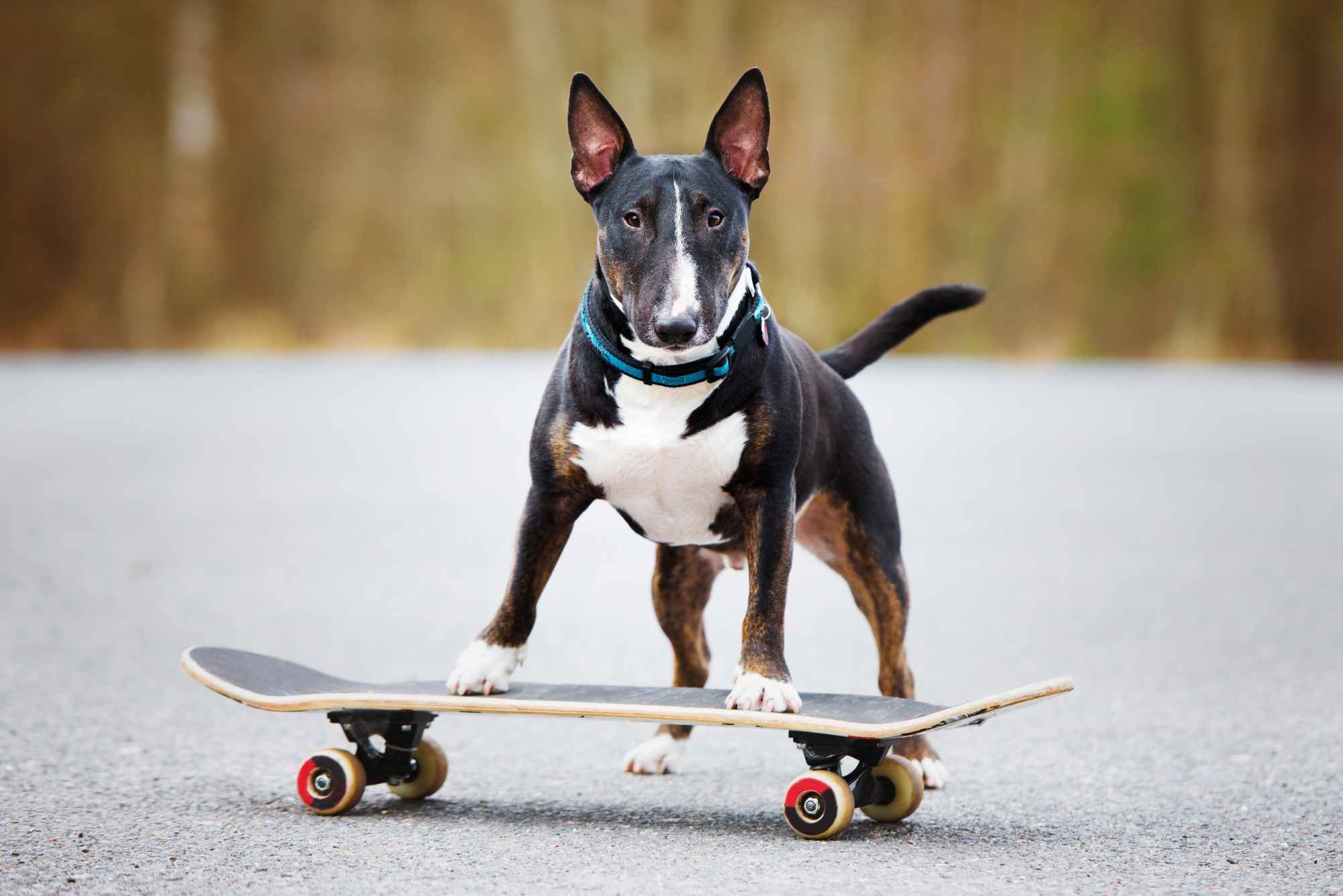
Bull Terrier training and exercise
Bull Terriers benefit from moderate daily exercise that provides physical and mental stimulation, such as long walks with the family. With their great strength and agility, participation in canine sports such as agility, obedience, tracking, carting and coursing is a fun and enjoyable way to channel their energy.
The Bull Terrier is very trainable but a firm hand and clear communication are essential. To maintain authority, good consistent discipline is a must, but be aware, with their independent nature, stubbornness and good self-esteem, their owner’s commands may often be disregarded.
Bull Terriers are more likely to cooperate if they consider the activity to be fun rather than work. They learn best through play and thrive on positive reinforcement with food, toys or cuddles as rewards.
If trained in a positive manner with patience and humour, there is no limit to what Bull Terriers can learn to do. They can excel at a variety of dog sports as well as in roles such as bomb detection, search-and-rescue and as service and therapy dogs.
| Energy level | High |
| Exercise requirements | High |

Bull Terrier feeding and nutrition
The Bull Terrier should do well on a high-quality dog food that is appropriate to the dog’s age (puppy, adult, or senior) and level of activity.
According to the AKC, Bull Terriers need a good diet that includes natural calcium, such as broccoli or plain yoghurt, especially when they are youngsters going through periods of rapid growth and bone development.
Bull Terriers are often quite food possessive and may show aggression towards other pets or humans who approach their meal. It’s best to leave them be to eat.
Treats can be an important aid in training a Bull Terrier, but some are prone to getting overweight, so watch your BT’s calorie consumption and weight level. Check with your vet if you have any concerns about your dog’s weight or diet.
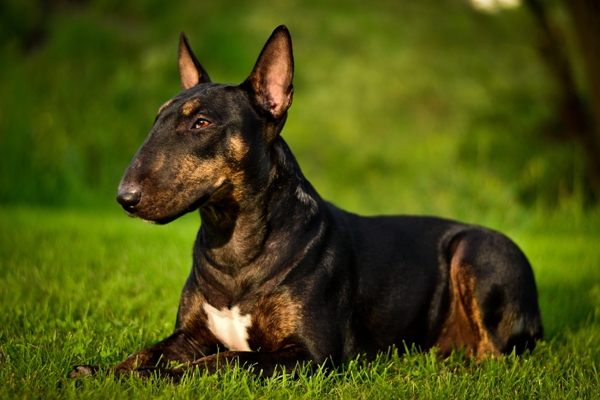
Bull Terrier care and grooming
Easy to groom and care for, the Bull Terrier’s short, flat, harsh, and glossy coat requires minimal maintenance. A weekly brushing with a soft brush or glove will help to remove dirt and loose hair and keep the dog looking its best.
BT’s can be prone to skin allergies, and if living outdoors, it’s recommended to give them a wash at least once a week.
Health issues for Bull Terriers
 Patella luxation affects Bull Terriers quite often and is in simple terms a disorder that causes the dislocation of the kneecap.
Patella luxation affects Bull Terriers quite often and is in simple terms a disorder that causes the dislocation of the kneecap.- Heart defects are quite common in Bull Terriers and can include cardiac valves that leak or valves that are too narrow to transport blood in the required amount. These defects can result in heart murmurs or irregular heartbeats. Symptoms to look out for include: coughing, lethargic behaviour, excessive weight loss or weight gain and distressed breathing. See a vet for assistance if you are observing any of these signs.
- Polycystic Kidney Disease (PKD) affects both the Bull Terrier and the Miniature Bull Terrier. It’s a condition that is inherited and symptoms can start to show at a young age. PKD causes cysts of fluid to form in the kidneys, obstructing them from functioning properly. Look for symptoms such as poor appetite, vomiting, drinking excessively, dry or pale gums and lethargic behaviour.
- Deafness occurs in Bull Terriers and can be detected from as early as four weeks of age. If you believe your Bull Terrier is suffering from a loss of hearing, your vet can perform some tests to determine the situation.
Not all conditions are covered by Pet Insurance. For details of Bow Wow Meow Pet Insurance cover, refer to the Product Disclosure Statement.
Free engraved pet ID tag on sign up3
Customer Satisfaction
21 day cooling off
Life-long cover4

GapOnly® & easy claims
MORE INFORMATION:
National Bull Terrier Council Australia: http://www.nbtca.com/
Bull Terrier Club of South Australia Inc: http://www.btcsainc.com/
Bull Terrier Club of WA Inc: http://www.btcwa.asn.au/
ACT Bull Terrier Club Inc: http://www.actbtc.com/
NSW & QLD Bull Terrier Rescue: http://www.australianbullterriers.com/
Victorian Bull Terrier Rescue: http://www.vbtrinc.com/

